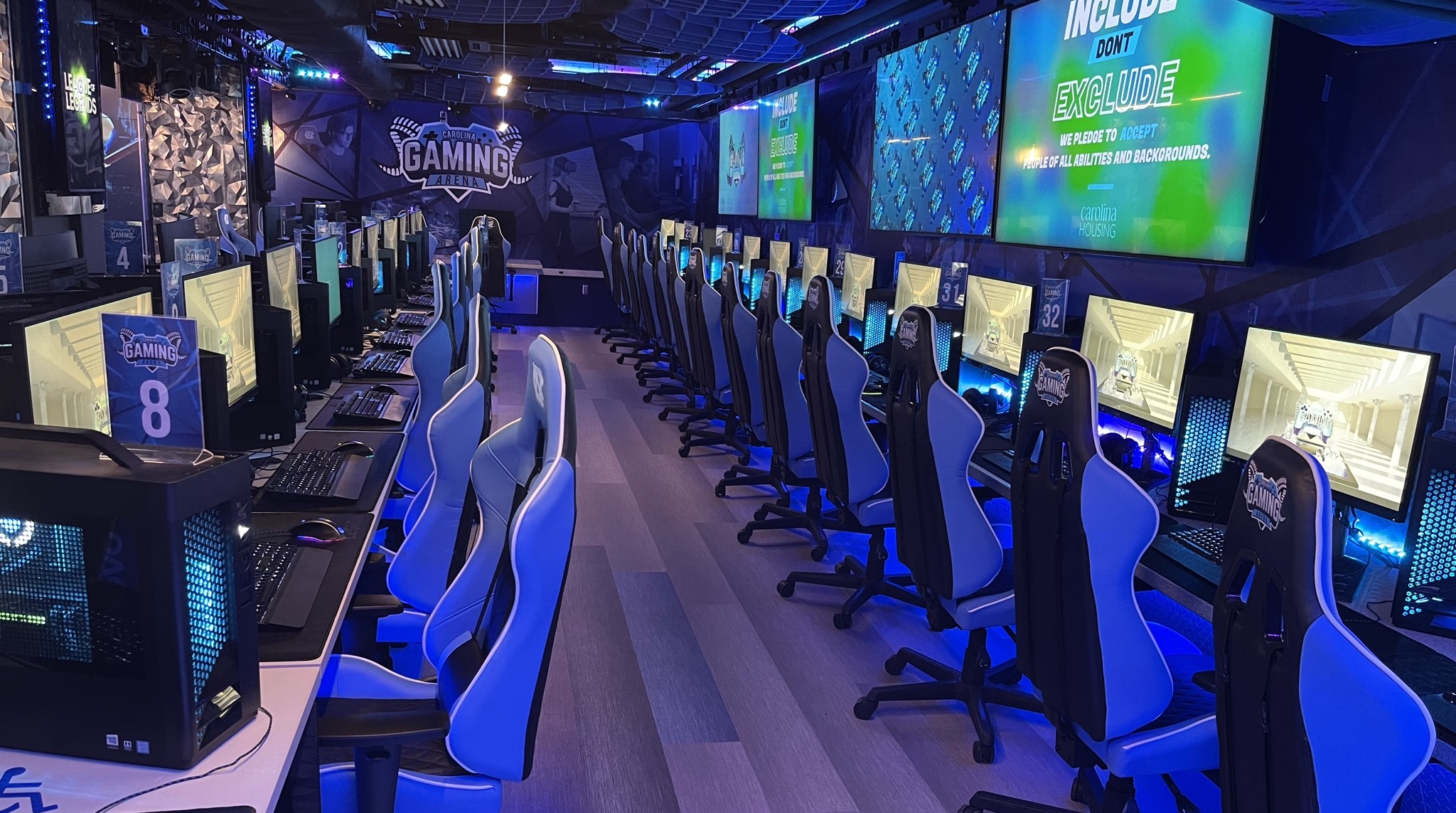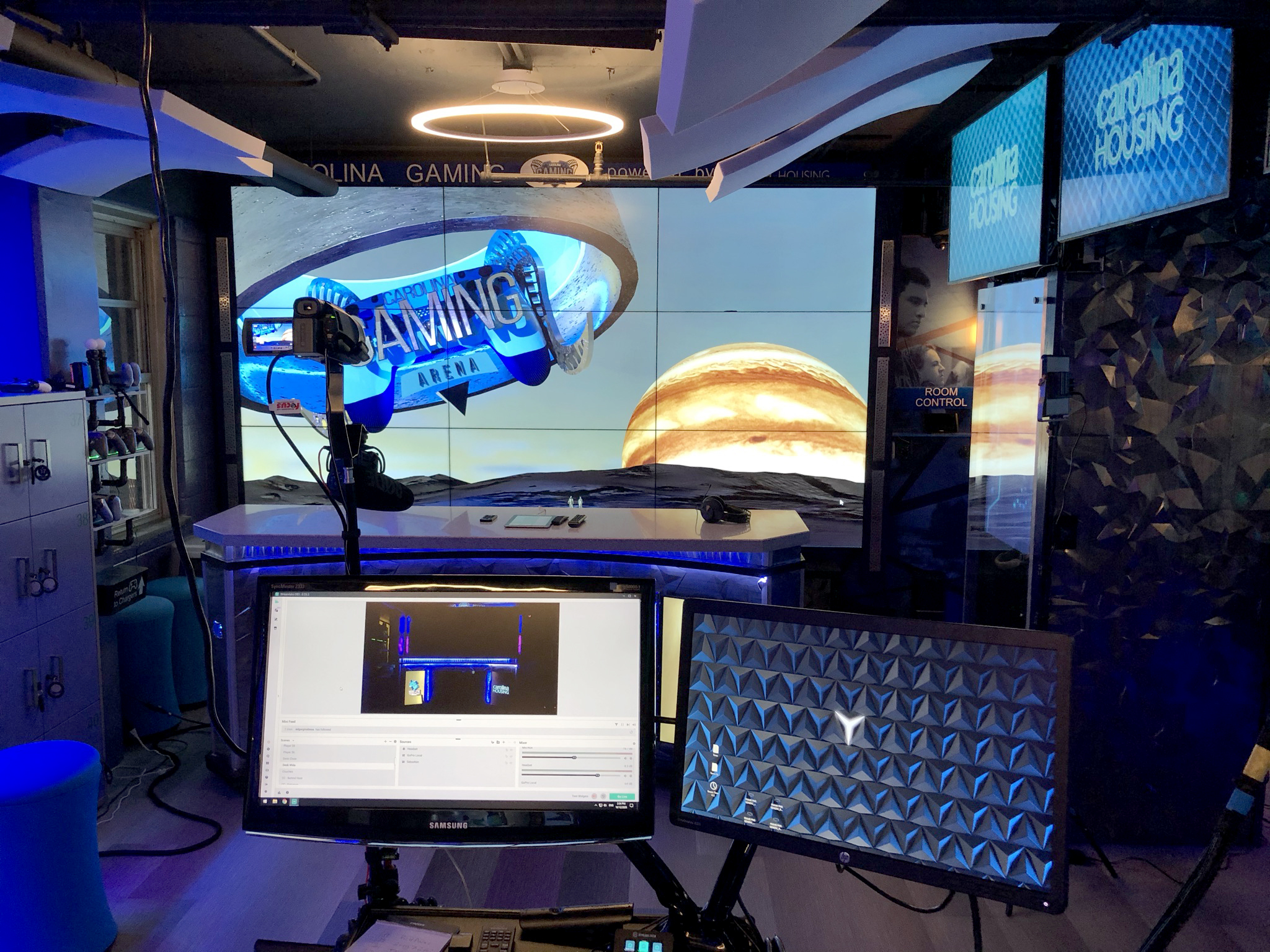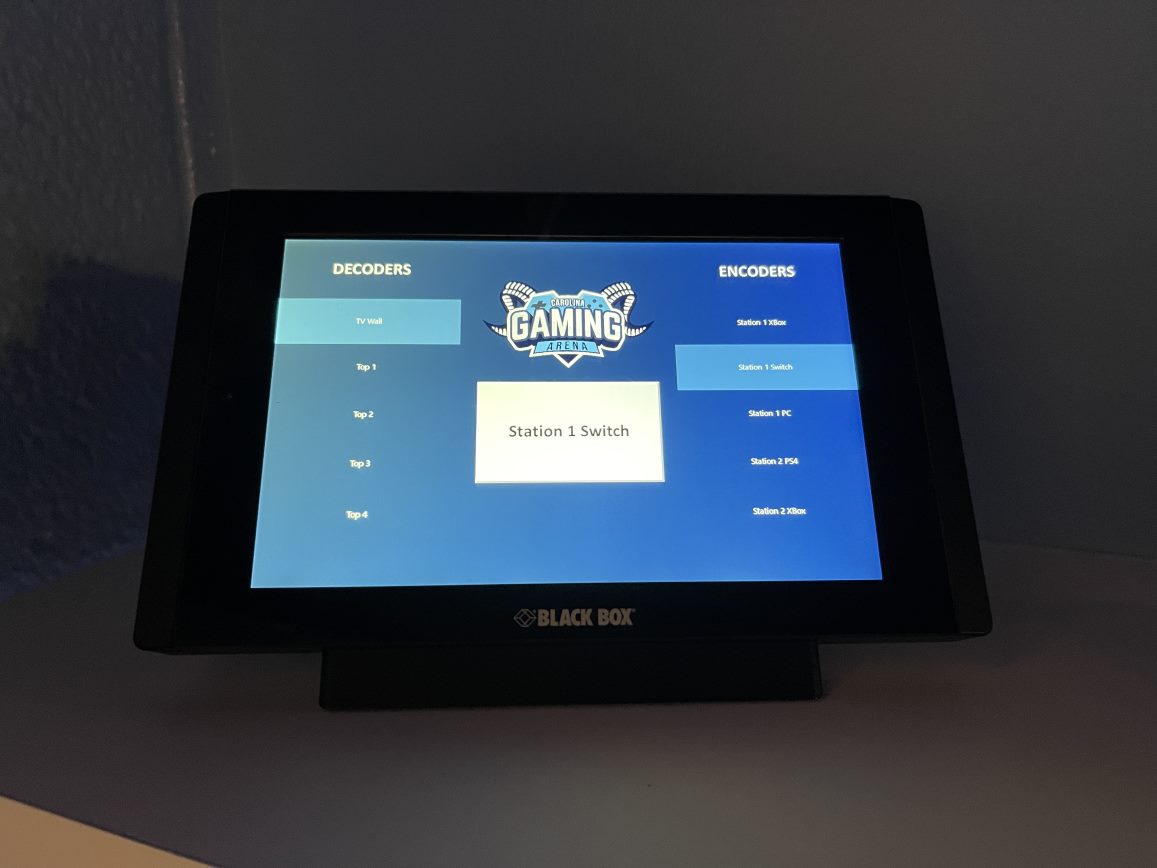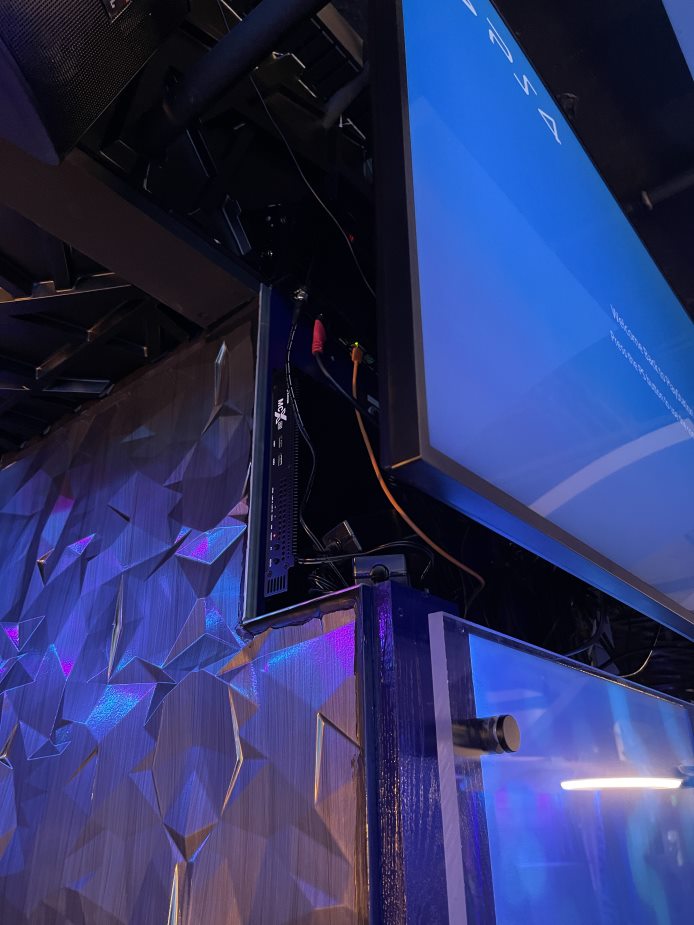North Carolina at Chapel Hill Opens Esports Arena
Black Box's MCX AV-over-IP system lowers technical barriers to participation in the gaming community.

The Carolina Gaming Arena at the University of North Carolina at Chapel Hill (UNC-Chapel Hill) is a place for students to come together, find others within the on-campus gaming community, and celebrate everything students do in the area of gaming, be it social, academic, or research-oriented.
UNC-Chapel Hill has put targeted programming and support models in place to both increase gaming in a healthy way and curtail negative effects of gaming. Classes that will be taught out of the Gaming Arena, and the facility will also host a research study. The facility, which launched with a soft opening on June 10, 2021, is home to Carolina’s competitive esports teams for Rocket League, Valorant, Counter-Strike: Global Offensive (CS: GO), Dota 2, League of Legends, Rainbow Six Siege, and Overwatch.
“At the end of the day, if all that happens is that a student comes down to the arena and they’re really impressed and they have a lot of fun hanging out, then that’s fine, as well,” said Lee Hyde, ResNET director for Information Technology Services at UNC-Chapel Hill. “It all contributes to their success.”

CHALLENGE
“The goal of the Carolina Gaming Arena is to reach as many people as possible to share a message about gaming and an experience that is welcoming, lowers toxicity, increases diversity, and supports students where they already are,” explained Hyde. “We wanted a space that would absolutely attract the most diehard competitive player, as well as someone who has no interest or perhaps is a bit timid about entering the world of gaming. We needed a facility that would really wow people and attract them down to the arena to engage with the gaming community here at UNC.”
One primary goal in the design of the Carolina Gaming Arena was to make the arena accessible and friendly not just for players, but also for the viewing community. Hyde and his team therefore needed a simple and intuitive control system that would allow students to interact with the technology in the room with ease. He envisioned an interface that would allow students to grab video from any gaming system or PC in the room, bring it to a specific display, and consume the experience of someone else playing.
Check out the below image slideshow of UNC's Carolina Gaming Arena







SOLUTION
“We weren’t sure about the execution options or what the experience would look like, but we were pretty much sold on Black Box as soon as we spoke to their team,” said Hyde. “The company’s MCX AV-over-IP system was essentially the perfect solution that we had brainstormed on our own—without realizing it actually existed.”
Serving as a single-network solution that enables converged networked AV, MCX delivers up to 4K 60Hz 4:4:4 video uncompressed over 10GbE with extremely low latency and switching times. The Black Box system makes it possible to handle video walls and video extension (point-to-point and point-to-multipoint) on a traditional IT network, with intuitive control over how content displays on every screen. As a software-controlled system, MCX brings flexibility and infinite scalability that allows for unrestricted expansion of the system.
A daily selection of features, industry news, and analysis for tech managers. Sign up below.
According to Hyde, the most attractive aspect of the Black Box MCX system is that it can be deployed and extended very easily and without reliance on a matrix switcher in an equipment closet. He had limited space available for housing AV devices and didn’t want to add additional cooling for that equipment. In addition to eliminating the need to run HDMI lines, he was able to create a distributed architecture and minimize the amount of equipment that possibly could fail during operations.
“If you have power where you need it to be, you just run an ethernet cable, connect MCX devices on either end of the network, and you’re good to go,” said Hyde. “The only requirement of using MCX is that it runs on a 10 Gbps network, and we are a CAT6A campus, so it’s just seamless over the same network infrastructure we already have in place. And, honestly, it would be incredibly easy to run a network cable if we did need an additional location.”
More in Esports
Lori Bajorek on the Value of Esports
D&H Distributing Announces Esports Certification Course
Inside Full Sail University's Outrageous Esports Arena
The Integration Guide to Esports
The Technology Manager's Guide to Esports
The MCX system controls audio and video signals for nine Samsung 55-inch monitors, three video columns made of up two Samsung 46-inch monitors mounted in portrait mode, and 13 Samsung 4K monitors of various sizes for content distribution across viewing areas. The fact that MCX has zero image lag is also tremendously valuable in the gaming environment, where exceptionally low latency is a must.
MCX allows users to handle video and audio separately, so the Black Box system made it easy for Hyde and his team to amplify audio in different zones of the arena without a lot of extra components. Along with audio and video, MCX decoders and encoders handle serial and USB distribution.
“We have 29 screens plus a ton of other devices throughout the room to manage, and it was important—and surprising to us, frankly—that the MCX devices so easily could send signals, serial commands, or other commands to each of those devices,” added Hyde. “We can instantly turn on the room or turn it off without having to walk around and individually control devices.”
Today, when a student walks into the arena, they can use a Black Box touch panel and graphical user interface to select any computer or game console listed on the screen and choose the screen on which they’d like to watch game play. Hyde and his team can customize the appearance of the touch panel and change its configuration over time.
With MCX decoders installed in the nearby Carolina House Creative Labs, students are able to produce content from the arena for streaming on the Carolina Gaming YouTube and Twitch channels.

RESULTS
By giving students and other visitors to the Carolina Gaming Arena straightforward control over video distribution, MCX lowers technical barriers to participation in the gaming community. It also helps UNC-Chapel Hill offer a unique environment and experiences that students don’t necessarily have available to them anywhere else.
“We have a mission to make sure that gaming is open and free to everyone, and that it is as easy to interact with as possible,” said Hyde. “MCX devices are definitely helping us achieve that goal.”
Hyde plans to expand the use of MCX in the future. He can quickly and simply run additional decoders out to other locations throughout the building or across the greater UNC-Chapel Hill campus, and he is working with Carolina Athletics not only to support teams within the gaming arena, but also to bring a larger esports tournament into an athletic facility such as the Dean Smith Basketball Center. Looking ahead, he also hopes to add a larger gaming arena in the next several years.
The Carolina Gaming Arena’s deployment of MCX shows how the latest software-defined AV-over-IP systems can ease universities’ entry into the world of esports. Offering flexibility, scalability, and unparalleled performance at an attractive price point, MCX serves as a highly adaptable solution that can change and grow with the needs of the institution and its student body.
The staff of AV Technology serves the community of decision-makers comprising AV/IT technology managers and directors, instructional technologists, and anyone making or influencing AV/IT technology decisions within their respective facilities and institutions.
